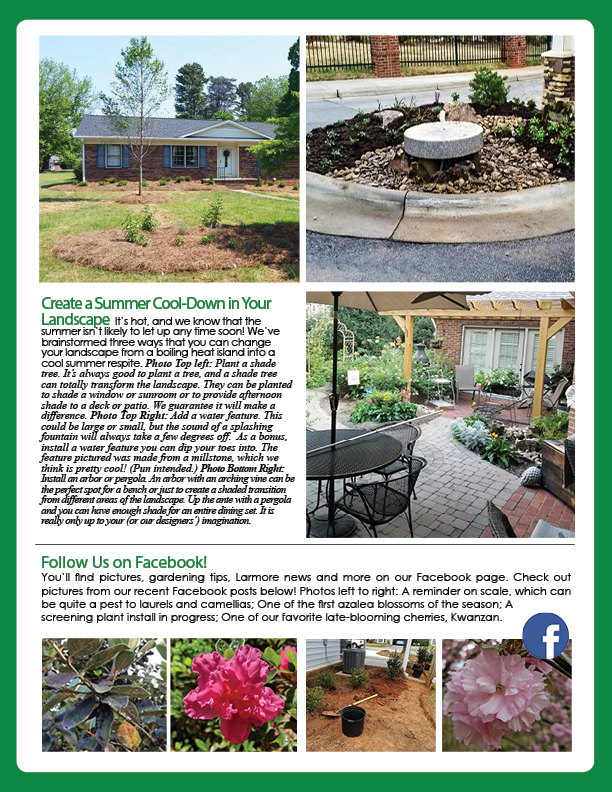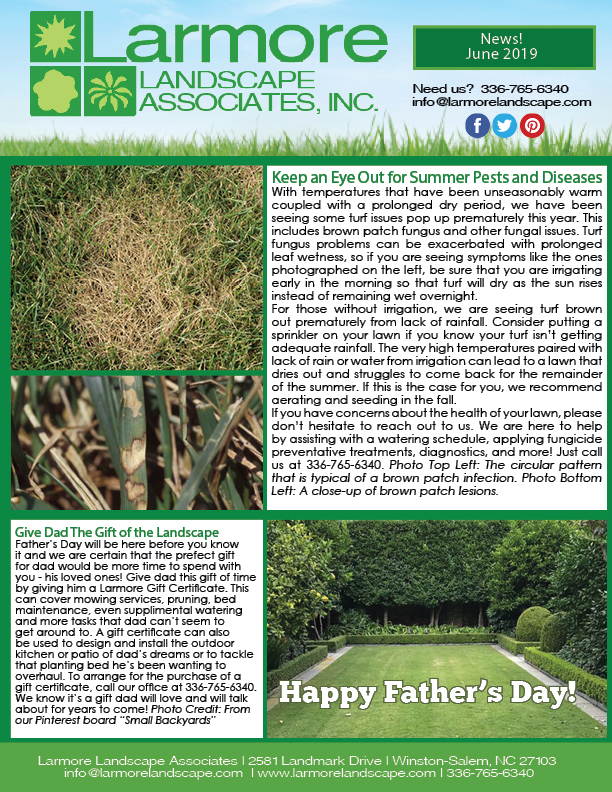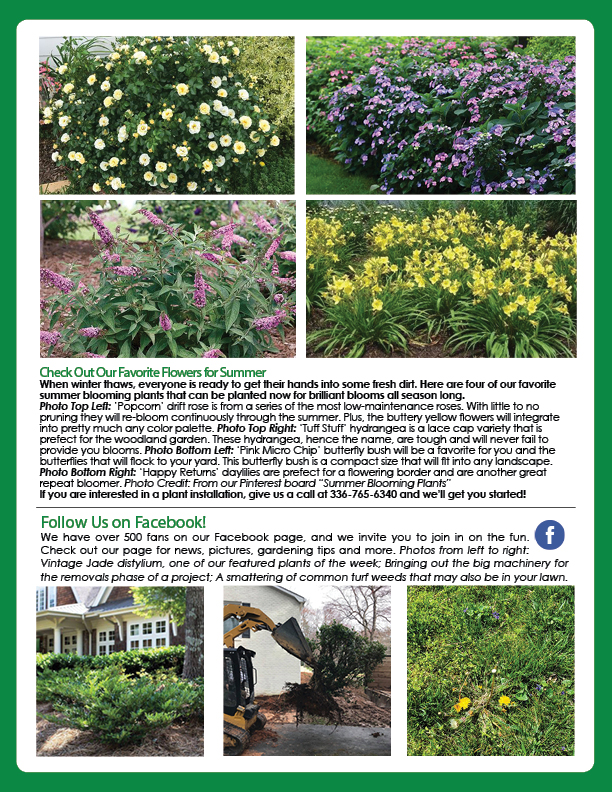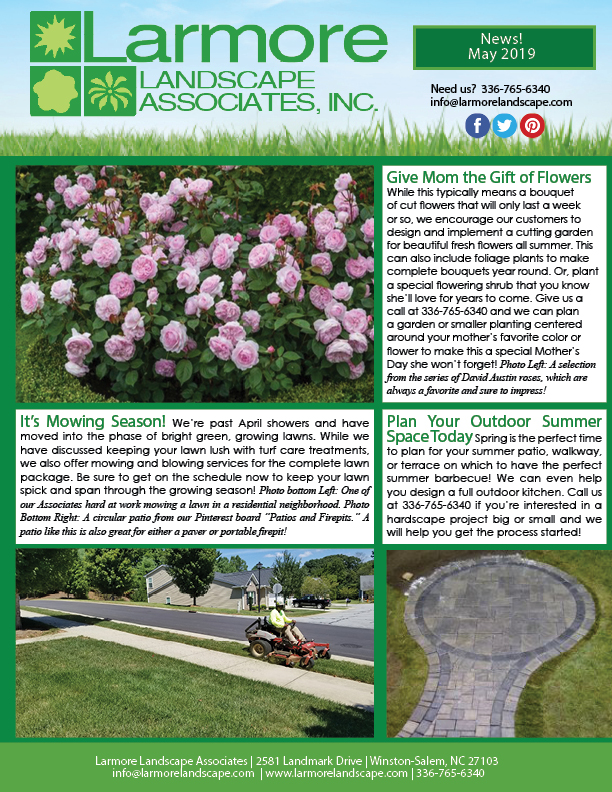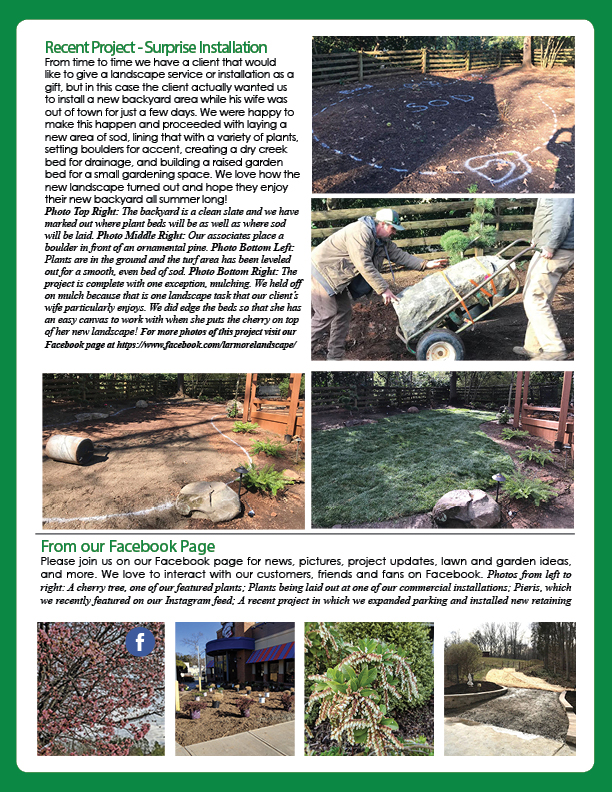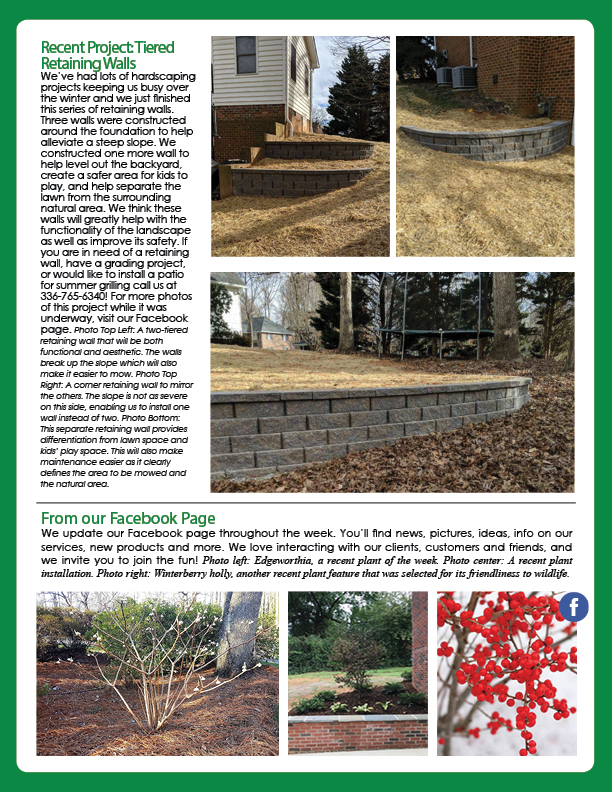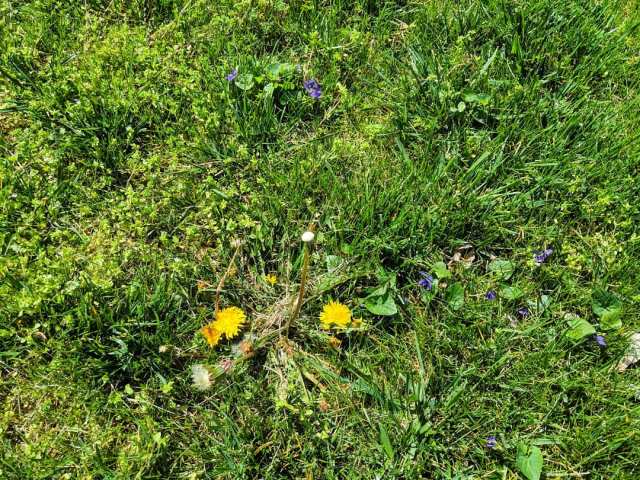
If you’re going through the trouble of aerating and seeding your lawn every year, keeping it fertilized, and maintaining it with mowing then you probably don’t want turf weeds to ruin all of that hard work. While we do offer a seven-step lawncare program that should easily keep weeds at bay, we wanted to single out a few weeds you might run into this time of year and how to tackle them. If you’d like more information on our lawncare program, please e-mail us at info@larmorelandscape.com or call us at 336-765-6340.
- Nutsedge

Nutsedge is best when treated in the early stages, but it can blend in easily with fescue and be difficult to spot until it is mature and obvious. There are two main types of nutsedge – yellow and purple. Both have triagular stems, but yellow nutsedge is generally lighter in color and has paler seed heads. Nutsedge can be a problem both in turf and plant beds. It loves wet areas and once established can easily spread to areas that are not quite so favorable. Nutsedge can be hand pulled in the early spring, but once we move into June and July it is best to use chemical control methods. This is due to the fact that they spread by underground tubers. Especially if seed heads have already begun to form, you can bet that additional tubers have begun to form also. Pulling nutsedge at this point can split and spread the tubers, creating a more aggressive and widespread problem. If you are struggling to control nutsedge in your turf, please give us a call and we can price out a treatment plan. You can find further reading on nutsedge here.
2. Poa Annua/Poa Trivialis

We mentioned this weed on our Facebook page earlier in the season as it has been particularly widespread this year. Also called annual bluegrass, this weed also favors wet, compacted soils and will grow in shade. Unlike nutsedge, Poa annua grows in clumps that can be easily pulled or sprayed. Poa trivialis, commonly known as roughstalk bluegrass, is a very similar weed and can be very unsightly in a fescue lawn. Selective treatment chemicals are very limited and have varied results. Both of these species are extremely problematic due to the fact that the best control comes with a fall and winter pre-emergent application, which happens to be when we want to overseed fescue lawns. The best way to discourage Poa annua and Poa trivialis is to make sure you’re treating your lawn well throughout the year. Be sure to aerate and seed in the fall to reduce compaction, maintain a good fertilizer routine (we make all of this really easy with our lawncare program), and don’t mow too low. If you’re past the stage of prevention and would like more information from one of our experts, call us at 336-765-6340.
3. Crabgrass

Probably the most commonly known turf weed by the layperson, crabgrass is a very widespread threat to healthy turf. You will typically see crabgrass emerge in the early spring and if left untreated it can escalate throughout the growing season. As you can see by the photo above, crabgrass has a low, spreading habit and the nodules that form on leaf blades can root and perpetuate the plant. As with the case of Poa annua and Poa trivialis, the best way to discourage crabgrass is to maintain a thick and healthy lawn, but we can also use chemical control methods to eradicate existing crabgrass.
If you’re struggling to keep weeds out of your turf, please give us a call or shoot us an e-mail at info@larmorelandscape.com to come up with a treatment plan. As we have discussed, the best way in general to stop weeds is with keeping your lawn healthy. While we can treat existing weed problems, we would love to help you cultivate a lush lawn that will be the envy of your neighbors and that will naturally suppress weeds. Contact us to get started today!
Photo Credit
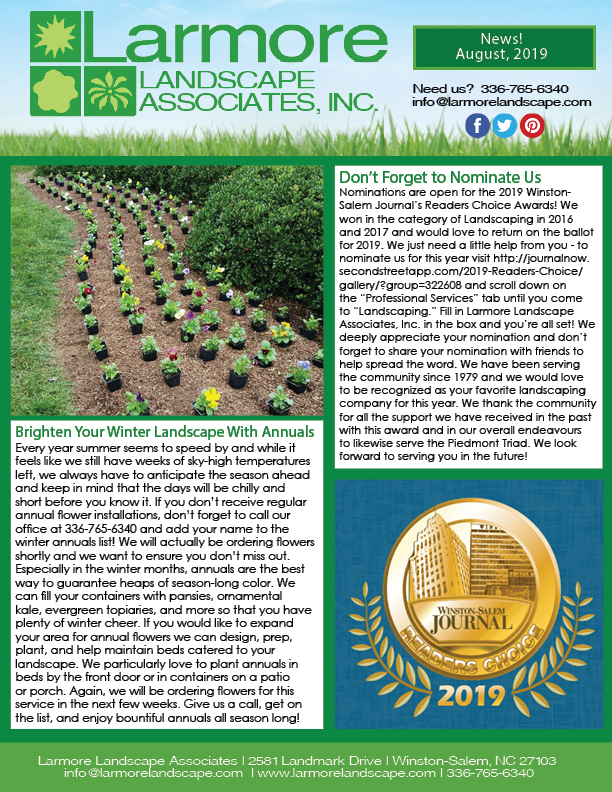
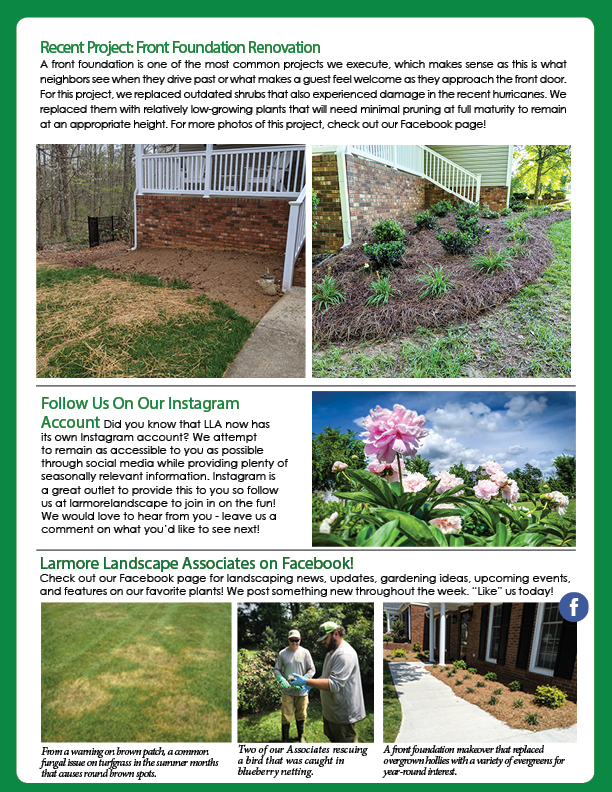
 One of the most frequent questions that we get is, “When do we prune X, and how?” We decided to cover this mystery in a dedicated blog post to help make pruning simple. We are currently in the middle of our big summer cutback, which is one of two major pruning events during the year. We typically start one cutback in the early summer, then have one in the fall. We also have a less strenuous pruning event in the winter to cover ornamental grasses, crape myrtles, and roses that were not covered in our fall pruning. We wrote a dedicated post on roses which can be found
One of the most frequent questions that we get is, “When do we prune X, and how?” We decided to cover this mystery in a dedicated blog post to help make pruning simple. We are currently in the middle of our big summer cutback, which is one of two major pruning events during the year. We typically start one cutback in the early summer, then have one in the fall. We also have a less strenuous pruning event in the winter to cover ornamental grasses, crape myrtles, and roses that were not covered in our fall pruning. We wrote a dedicated post on roses which can be found 
